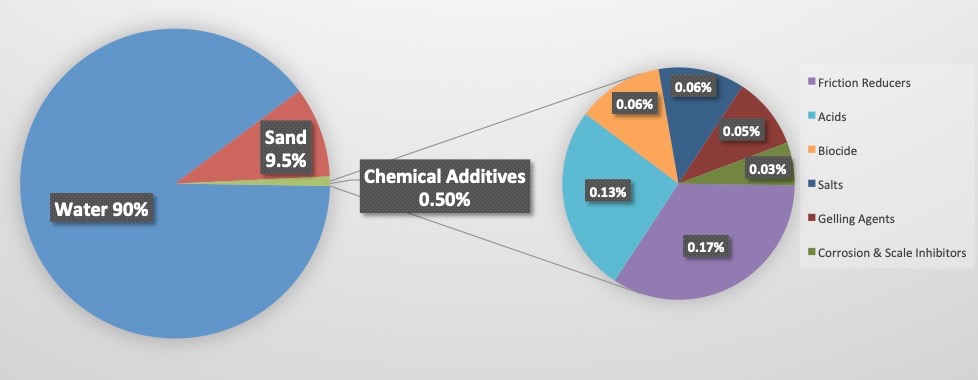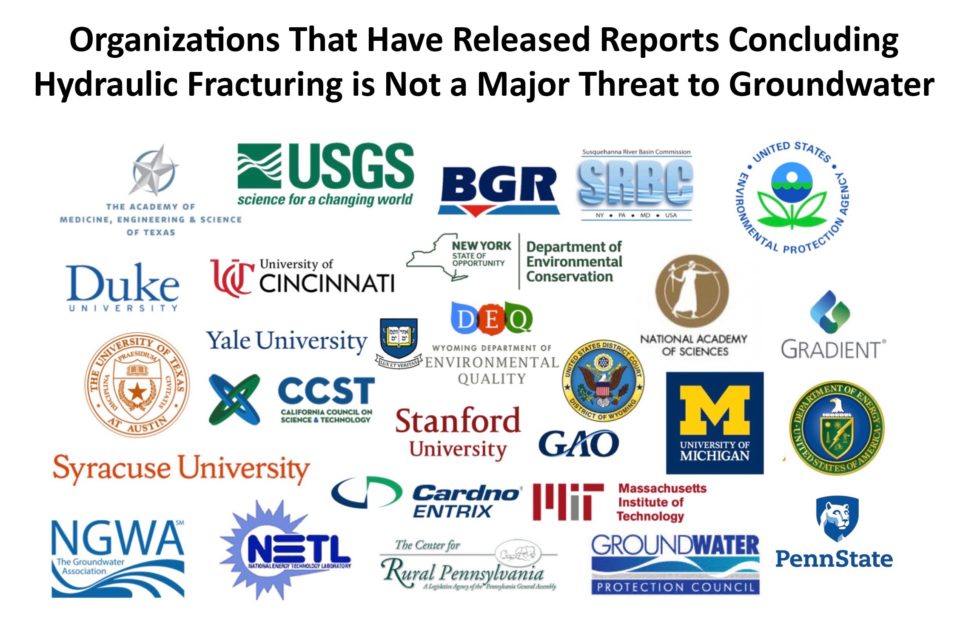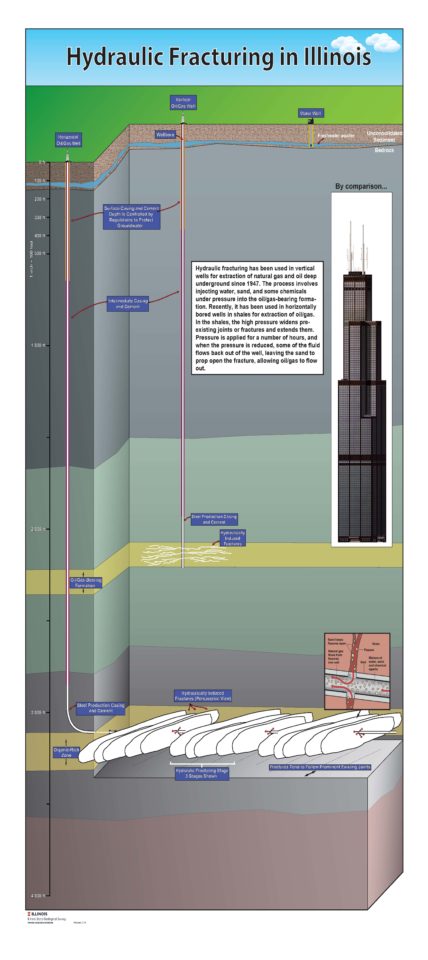Hydraulic fracturing, or “fracking,” is a well completion technology that has been safely used in the Illinois Basin since the 1950s to maximize oil production. Fracking occurs after drilling has been completed and involves pumping fluid — typically 99.5 percent water and sand, with an additional mixture of chemical additives — into the target formation at pressure in order to open up small fractures and allow oil and gas to flow through the rock.
In recent years, fracking has been coupled with horizontal drilling to develop oil and natural gas resources from tight rock formations in several regions of the United States, propelling the United States to the status of being the world’s top crude oil and natural gas producer. For more on the high volume horizontal hydraulic fracturing, see the following Energy In Depth video.
Although Illinois has significant potential for New Albany shale development using horizontal drilling and high-volume hydraulic fracturing technologies, such technologies have not been employed in the state thus far. However, hydraulic fracturing remains a critical component to the conventional vertical well development that has been taking place in the state for more than a century.
Vertical Hydraulic Fracturing Animation
Though hydraulic fracturing (HF) is not a new technology, its prevalence in facilitating the current U.S. oil and natural gas boom has prompted the “Keep It In the Ground” movement to spread misinformation about the process. Here are some common myths, followed by the facts.
MYTH: Hydraulic fracturing fluid chemicals are “secret.”
FACT: Only the specific blend of hydraulic fracturing (HF) chemicals used are subject to propriety “trade secret” protections – not the chemicals themselves. The federal Community Right-to-Know Act legally requires operators to disclose ALL fracking chemicals used on Safety Data Sheets, which are available on sites where HF stimulations occur and also must be provided to first-responders and other emergency personnel. Chemicals used in HF fluid are also disclosed to state regulators. FracFocus.org, a searchable, nationwide database, also includes a list of HF fracturing fluid additives used all across the country.
MYTH: Hydraulic fracturing fluid is dangerous.
FACT: Hydraulic fracturing fluid is 99.5 percent water and sand. The remaining .5 percent is most prominently comprised of guar or xanthan (basically ground up beans), surfactants (laundry detergents) and compounds that prevent bacteria from forming in the well bore. Many of the additives used in HF fluid are common household chemicals we use every day. All additives used are present in such low concentrations that they present no threat to the public.

Franklin Well Services technical manager Jerry Robinson demonstrates the composition of the typical Illinois Basin hydraulic fracturing fluid in the following video.
MYTH: Hydraulic fracturing poses a systemic threat to groundwater.
FACT: More than 30 scientific studies have concluded hydraulic fracturing poses no major threat to groundwater. Many of those studies examined groundwater pollution and specifically ruled out hydraulic fracturing as the cause. Most notably, a landmark 2016 U.S. Environmental Protection Agency study concluded that, “[H]ydraulic fracturing operations are unlikely to generate sufficient pressure to drive fluids into shallow drinking water zones.” The EPA reached this conclusion even after expanding the definition of HF to include a wide range of other oilfield activities, demonstrating the safety of the entire development process. Collectively, the current body of research has examined more than 14,500 water wells across the United States and found no evidence to support the oft-repeated claim that HF poses an inherent threat to groundwater. Two of the studies that find no evidence of groundwater impacts from HF were even partially funded by anti-HF groups.

MYTH: Hydraulic fractures can grow upward thousands of feet through solid rock and reach freshwater aquifers.
FACT: The energy required to create such a vertical fracture is impossible to generate. A 2013 Gradient report states “there is not scientific basis” for the claim that HF fluids can contaminate groundwater from depth, also concluding, “[I]t is implausiblethat the fluids pumped into the target formation would migrate from the target formation through overlying bedrock to reach shallow aquifers.”
MYTH: Hydraulic fracturing causes widespread earthquakes.
FACT: Earthquakes linked to the actual hydraulic fracturing process are extremely rare and generally not felt on the surface. Induced seismicity is more commonly linked to saltwater disposal, an entirely separate process from HF. Earthquakes linked to saltwater disposal are rare as well. In Illinois specifically, there has been no credible link induced seismicity attributable to either hydraulic fracturing or saltwater disposal, even though thousands of HF treatments have been conducted in the Land of Lincoln and thousands of saltwater disposal wells have operated in the state for decades.
See the following Illinois State Geological Survey infographic for an illustration of the vertical hydraulic fracturing process that is conducted in Illinois and the high volume hydraulic fracturing used to complete many horizontal wells to develop shale and other tight-rock reservoirs in places like the Permian Basin and North Dakota.
Illinois Oil Industry Statistics
14,000+
JOBS
$330MM
ANNUAL STATE TAX REVENUE
$3.05B
